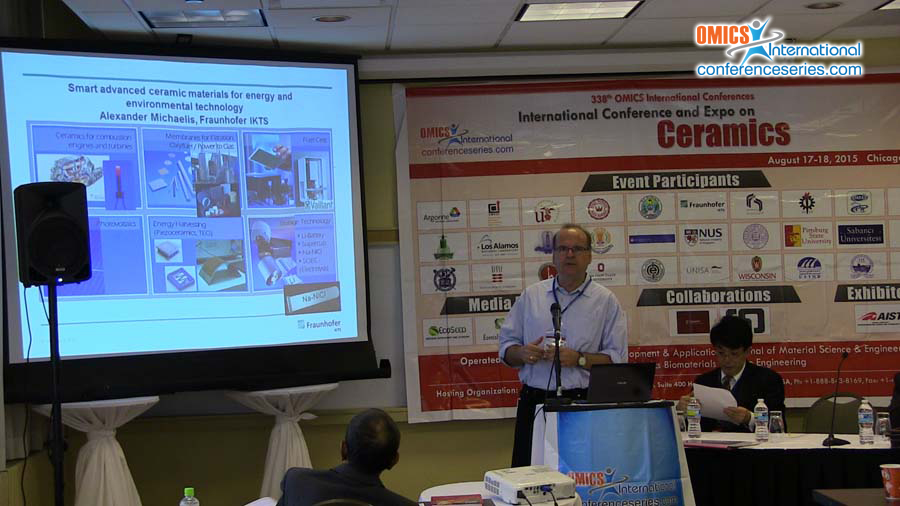
Alexander Michaelis
Fraunhofer Institute of Ceramic Technologies and Systems, Germany
Title: Advanced ceramics for energy systems
Biography
Biography: Alexander Michaelis
Abstract
Advanced ceramic materials offer enormous potential for innovations in the fields of efficient energy conversion and storage as well as environmental technology. The joint application of structural and functional ceramic technology allows for unique combination of electronic, ionic (electrochemical) and mechanical properties enabling the development of new, highly integrated systems. We present specific examples for Fuel Cell, Li-Ion and high temperature Na-metal batteries as well as ceramic membrane systems development. As a first example, high temperature fuel cell systems developments for both mobile and stationary applications are presented. In the power range from 1 W to several 10 kW we use SOFC (solid oxide fuel cell) technology, for the high power range up to several MW we prefer MCFC (molten carbonate fuel cell) technology. Both fuel cell types use conventional hydrocarbon fuels and are currently being commercialized. Using related ceramic technology platforms we also develop energy storage systems in different power ranges. Examples for fabrication of Li-Ion batteries as well as high temperature NaNiCl batteries are presented. The production of both, power generation and storage systems require new approaches for non-destructive in line testing methods which are discussed as well. For illustration of the potential of advanced ceramic materials in environmental technology, ceramic membrane systems are discussed. Ceramic membranes can be used for micro-, ultra- or nano- filtration of liquids. Further innovations require an improved control and reduction of pore size. This allows for new applications in gas separation and pervaporation systems. For this, pores sizes below 1 nm have to be generated using specific structural features of selected materials.
Speaker Presentations
Speaker PPTs Click Here






